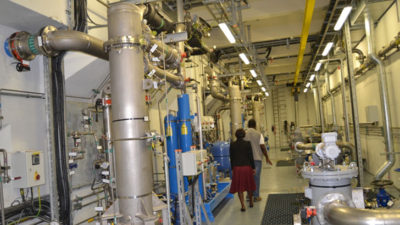
While pomp and fanfare marked yesterday’s official handover of the $350.7 million (about K260 billion) energy compact to improve the energy sector, some indicators raise the question whether the deal could be a hit or miss.
Under the compact, the United States of America (USA) government agency, Millennium Challenge Corporation (MCC), through the Millennium Challenge Account-Malawi (MCA-M), upgraded the hitherto obsolete Nkula A Hydro Power Station and boosted its generation capacity from 24 megawatts (MW) to 36MW besides improving power transmission infrastructure nationwide.
In all, 70 percent of the MCC funds went into infrastructure development with nine percent going to environmental management and 12 percent covering administrative costs.
However, what is emerging is that while the country has now expanded the infrastructure, power supply remains unreliable with the same old factors hampering hydro power production visibly coming back to haunt the economy.
In his address, President Peter Mutharika also bemoaned over-dependence on hydro-generated electricity, saying it has put Malawi at risk of climatic hazards.
He said: “We have been depending too heavily on hydropower. But climate is changing and water in Lake Malawi and Shire River is never sufficient to generate enough power for Malawians.
“Now, we are diversifying into coal, gas, wind and solar power generation. We will continue to pursue medium to long-term measures to end energy problems once and for all.”
The President also mentioned the Malawi/Mozambique Power Interconnector through Phombeya Sub-station in Balaka and Zambia using Nkhoma Sub-station in Lilongwe as well as New Bwengu Sub-station, fruits of the compact, as positioning the country to import or export ‘excess’ power.
Former Electricity Supply Corporation of Malawi (Escom) chief executive officer Kandi Padambo, responding to an enquiry on whether investing the compact funds pumped into Nkula A in alternative energy sources could have served the country better, observed that much as the investments were a step ahead, the country needed to decisively diversify its power sources at a bigger scale.
He said: “We have been battered by climatic calamities which have significantly reduced our ability to generate enough power through hydro.”
Padambo said authorities should learn from the Japanese who have shown Malawi the way at Kamuzu International Airport in Lilongwe where they are generating about one MW through solar.
He said: “It is very advisable to look elsewhere for power to supplement hydro when water levels are low.”
Echoing Padambo, Ibrahim Matola, who was Energy and Mines minister during the administration of Joyce Banda when the compact was revived, blamed the power woes on the failure by the country to diversify its energy sources.
He said: “Between 2012 and 2014 the government had negotiated with the authorities in Mozambique for the country to benefit from coal which passes through this country en route to South America. Other sources were geothermal and wind energy.”
Another former Energy minister, Grain Malunga, now a minerals, geology and environment consultant, blamed the planners of the country’s electricity systems for not being proactive in designing electricity generation systems.
He said: “In my view we are facing two big problems; first lack of planning on the part of our designers who designed our hydro power plants on a run of a river mode. This does not allow the inclusion of a dam which acts as a reservoir when water levels are low.
“The other problem is environmental degradation which has even rendered a reserve dam at Kapichira useless. At this point we should have been talking of putting up power generation plants near Kaziwiziwi in Rumphi and Bangula where coal is produced.”
In the past four years, Escom and now Electricity Generation Company (Egenco) have grappled with power generation which has reduced due to low water levels in Lake Malawi and its sole outlet Shire River, where about 90 percent of the power fed to the national grid is produced.
At the peak of power supply challenges in 2016 and 2017, Malawian consumers endured up to 24 hours a day of power rationing. Subsequently, the maximum power generation capacity dwindled from 351MW down to 200MW.
During yesterday’s ceremony, Washington DC-based MCC vice-president Jean Hauch challenged the country’s leadership to ensure that Shire River is used in a sustainable manner.
She said: “With more than 90 percent of Malawi’s power generated by hydro power, protecting the Shire River is crucial to protecting power generation.”
Hauch said the Shire Basin Environmental Sustainability Trust will continue to fund catchment area protection programmes.
Nkula A Hydro Power Station was commissioned in 1966 and MCA-M board chairperson Symon Itaye said the upgrade would tackle the frequent breakdown of ageing machinery experienced at the unit.
